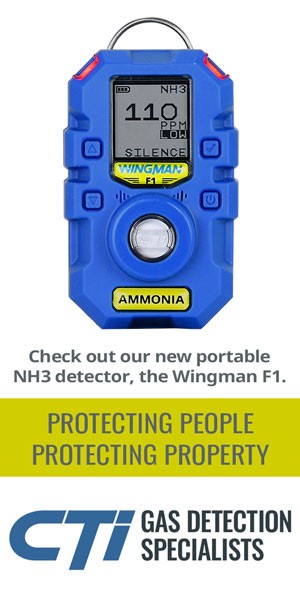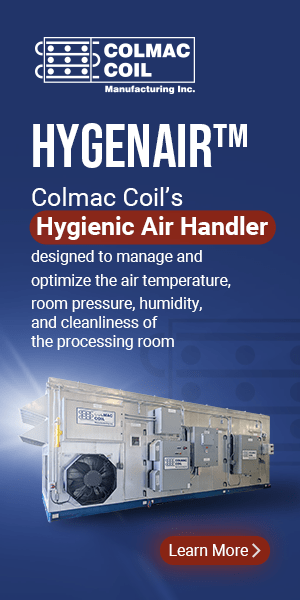IIAR Standards: A Look Back
“When I first got on the Standards Committee, there were maybe 12 people on it. When I stepped down as chair, there were 120. I think people saw what we were doing and wanted to get involved.”
–Bob Czarnecki, chairman of IIAR’s Standards Committee
Gary Schrift, president of IIAR, said Czarnecki’s work has been apparent in his well-organized and executed committee meetings, continual communications, and updates to committee members and IIAR staff, and the vast amount of projects he managed. During Czarnecki’s tenure, IIAR’s standards have been recognized by the many code bodies, the Environmental Protection Agency, and the Occupational Safety and Health Administration.
“Bob has brought all of our standards along through the years to make sure they are current and, especially, adopted by code bodies,” Schrift said.
Bruce Nelson, director of innovation for Colmac Coil Manufacturing Inc. and past chairman of IIAR, has worked closely with Czarnecki and the Standards Committee over the years. “I can only express my profound gratitude to Bob Czarnecki for his leadership and transformation of the Standards Committee—how it is organized, how the work is divided, and accelerating the pace of the work. Bob did all of those things,” said Nelson. “It is a team effort, but it was his leadership that has produced amazing and great results.”
The committee has been tasked with creating new standards as well as updating existing standards every five years. “We maintain them, and every time we do the updates, they get improved,” Czarnecki said, adding that the committee tracks any updates that come in during the five-year period. “We tally them up, and when it comes time for the re-write, we address them all.”
The committee has also focused on writing new standards, which Czarnecki said takes a long time. “The updates are easier, but when you’re starting from scratch, things are harder,” he said.
Once standards are created, the first step is getting them ANSI approved, a somewhat rigorous process. “The next step is to get the various code bodies to refer to the standards. The last step is to get the code bodies and others in the standards business, such as ASHRAE, to remove ammonia from their documents and defer to IIAR standards for anything ammonia related,” Czarnecki said, adding that to date, all codes except the International Fire Code (IFC) and ASHRAE 15 defer to IIAR standards for ammonia.
Currently, IIAR is working with the International Fire Code, trying to get the organization to defer to IIAR’s standards, Czarnecki said. The committee is also working with the Academy of Natural Refrigerants, which puts out education courses on IIAR’s standards. “We check course content for accuracy,” he said.
Additionally, the Standards Committee is currently working on a hydrocarbon standard. “One thing I was able to do while [I was] chairman was to employ a task force to examine a need for and guide the decision to move forward with the hydrocarbon safety standard. It seemed like a bit of a crazy idea department at the time,” Nelson said.
Hydrocarbons can provide a solution for smaller commercial equipment that is dominated by synthetics, Nelson said. “It is difficult to apply ammonia in some of those commercial rooftop packaged types of machines, but hydrocarbons fit those applications beautifully,” he explained.
For the past 12 months, Nelson supported Dave Schaefer, IIAR’s chair, but has stepped down as an IIAR and Ammonia Refrigeration Foundation (ARF) officer. “Bruce is extremely well organized. He makes plans and follows up to execute them,” Schrift said. “In my year at IIAR, with him as IIAR chair, and then the last 12 months as ARF chair, I can see how much has been produced.”
Nelson has worked to get the ARF bylaws updated with some needed changes in the past months, supported the ARF annual report, initiated written procedures for the ARF scholarship process and the ARF research process, Schrift said.
What makes all of the work within IIAR so remarkable is that everybody working on the committees is a volunteer. “You take what everybody can give. Fortunately, the membership on the committee was very willing to work hard,” Czarnecki said, adding that the membership has grown over the years, particularly on the Standards Committee. “When I first got on the Standards Committee, there were maybe 12 people on it. When I stepped down as chair, there were 120. I think people saw what we were doing and wanted to get involved.”
Schrift said the volunteer efforts are improving the environment and advancing the refrigeration industry. “The foresight and past work of so many will greatly support the national and international efforts underway in regards to HFC reduction,” he said. “Natural refrigerants are safe for the environment, and having ANSI standards developed for these natural refrigerants will allow for safe, sustainable, and expanded use of these refrigerants in the coming years.”













